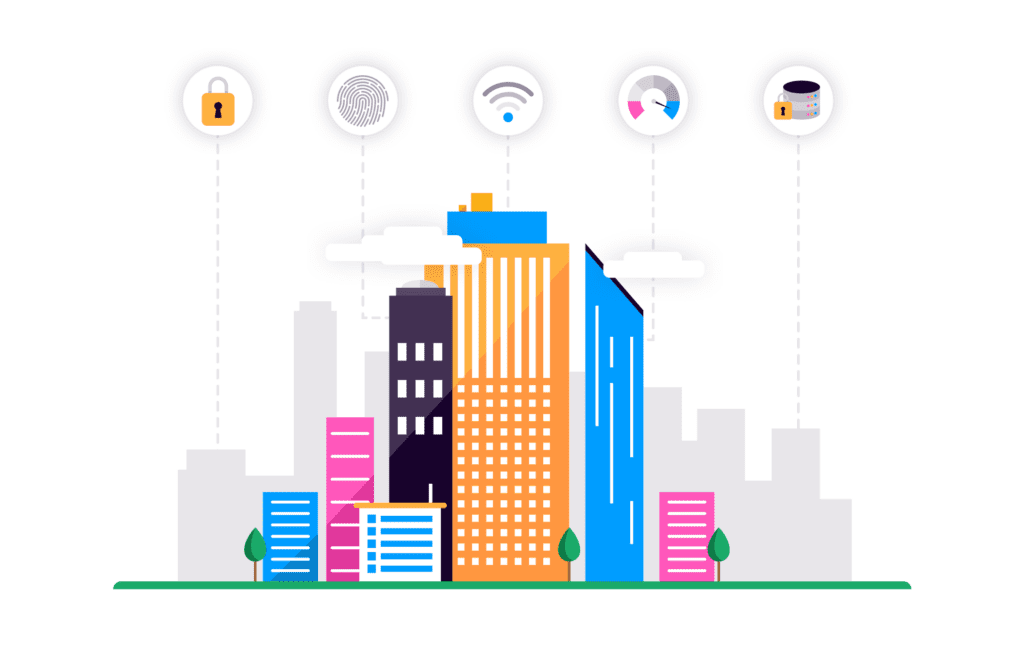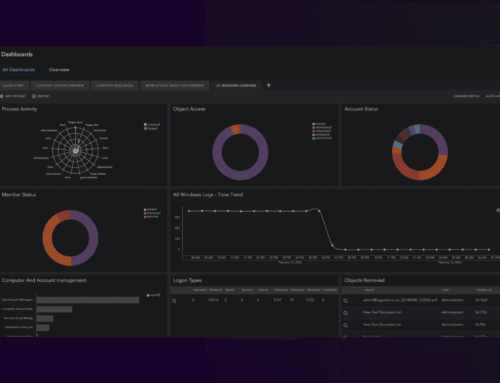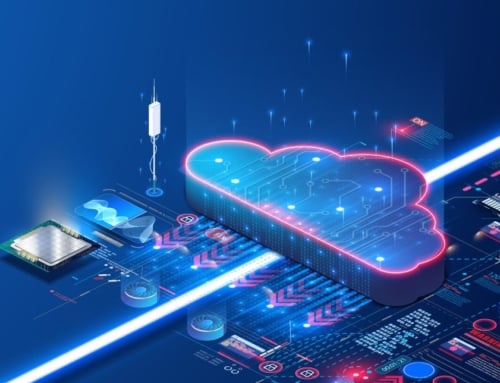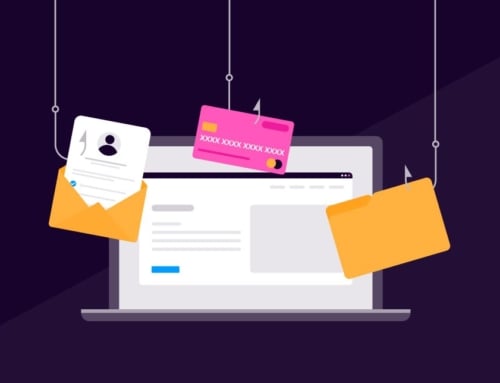Updated Jan 2024
Your home probably houses some vital possessions and heirlooms, so when you leave you lock up your doors and windows, maybe you even have two or three locks on your doors, or maybe you have an alarm, CCTV, a big gnarly dog, or, a little gnarly dog. Just like you protect your home by locking your door when you leave, you should also protect your organization’s network and computers with a watertight cyber security solution. Here you can discover why cyber security matters and the types of threats you can face.
Common cyber threats range from phishing, DDoS, and ransomware, and all of these vary in frequency and sophistication.

What is cyber security?
Cyber security refers to protecting systems connected to the internet from online threats in cyberspace, some of them business-critical. It protects an organization's software, data, and hardware and helps prevent cybercriminals from accessing devices or their networks.

Facets of cyber security
The best cyber security solutions will be all-encompassing protecting against major cyber threats and should include:
- Application security
- Cloud Security
- Data security
- Endpoint security
- Identity management
- Infrastructure and database security
- Mobile security
- Network security
- Operational security
It should also include disaster recovery or business continuity planning, which outlines how an organization will recover from any future cyber attacks plus how they scan and survey the cyber threat landscape, and utilize preventative methods, such as educating employees.
The importance of cyber security
The importance of cyber security comes down to the need and requirement to keep information, data, and devices secure. In today’s world, people store vast quantities of data on computers, servers, and other connected devices. Much of this is sensitive, such as Personally Identifiable Information (PII) including passwords or financial data. And then there's Intellectual Property (IP).
If a cybercriminal was to gain access to this data they could cause havoc. They can share sensitive information, use passwords to steal funds, or even change data so that it benefits them, the attacker. Organizations need to have security solutions that enable them to be compliant.
In the case of public services or governmental organizations, cyber security helps ensure that the community can continue to rely on their services. For example, if a cyber attack targeted the energy industry, a power plant for example, it could cause a city-wide blackout. If it targeted a bank, it could steal from hundreds of thousands of people.
Benefits of cyber security
By implementing security solutions, businesses and individuals (such as MSSPs) can protect themselves and others against the full range of cybersecurity threats outlined below.
With cyber security, companies have peace of mind that unauthorized access to their network or data is protected. Both end users, organizations and their employees benefit.
It isn't just detection that cybersecurity strengthens, it's also mitigation and response. Should an attacker utilizing advanced techniques be successful the recovery process is far quicker. In addition, companies will often notice that customers and developers are more confident in products that have strong cyber security solutions in place.
Types of cyber security threats
There's an abundance of cyber security threats, actors, and techniques. Here are a few of the most common ones:
DDoS Attack
A DDoS or Distributed Denial of Service Attack is when cyber criminals overwhelm a network or its servers by sending too much traffic. This prevents the network from handling valid requests and makes the entire system unusable. It can completely stop organizations
Phishing
This type of cyber security threat involves sending fake emails from seemingly legitimate sources to get information such as credit card details or passwords.
Quishing
There has been a rise in phishing emails leveraging QR codes as a source of attack - dubbed Quishing. It's very difficult to detect by the email security gateway and is easily passed to the user. While the phishing email content remains the same; showing some emergency issues or incidents and asking them to follow the link. However, in this case, the link has been replaced by a QR code that has to be scanned by a camera usually via a mobile device. It's a simple yet effective method to bypass the email security.
Malware
This malicious software can include computer viruses, spyware, Trojan horses, worms, and any other program or file that can harm the computer. Malware is commonly spread by downloads that seem legitimate or attachments in emails.
Within the category of malware, there are several types of cybersecurity threats:
- Adware is advertising software that spreads malware.
- Botnets are numerous computers infected with malware that form a network. Cybercriminals use them to perform online tasks without the permission of the devices’ owners.
- Ransomware will lock data and files and threaten to leave the files locked or delete them unless the victim sends payment.
- Spyware records the actions of a user, such as gathering credit card information.
- Trojans are malware but disguised to appear as legitimate software. After being uploaded, they collect data or cause damage
- Viruses are self-replicating. They attach themselves to a file and then spread through the computer’s system.
Ransomware
Given its potential for generating enormous sums of money for criminals, ransomware is the type of malware we often hear about these days.
Ransomware typically finds its way onto your system via phishing emails that include malicious attachments or facilitate “drive-by” downloads onto your system.
Once it is installed, criminals typically control your system and demand payment to give you back access. While ransomware gangs targeting businesses can ask for millions of dollars in return for information and access, many schemes work by targeting individuals and collecting many smaller payments.
Keep an eye on the ransomware gangs and their activity. We have an Emerging Threats blog and in-depth report every month - Check it out here.
Man-in-the-Middle Attack
This type of attack involves the cybercriminal intercepting conversations or data transmissions between multiple people. An example would be a cyber attack using an unsecured Wi-Fi network to intercept the data that the victim sends from their computer to the network.
Social Engineering
This type of attack tricks users to break security procedures by using human interactions. Cybercriminals commonly combine social engineering attacks with others, such as phishing, to increase the chances of the victim clicking on a link or downloading a file.
SQL Injection
SQL stands for Structured Query Language. An SQL injection aims to perform actions on data in a database and potentially steal it. It involves inserting malicious code via SQL statements and taking advantage of data-driven applications’ vulnerabilities.
For all of these variations of attack and techniques, we offer playbooks and implementation via Global Services.
Challenges of cyber security
It is always evolving
Perhaps the biggest challenge in the cybersecurity industry is the continuous growth in technology which presents cybercriminals with an ever-growing list of potential opportunities for exploitation. To make this even more challenging, cybercriminals constantly develop new methods of conducting cyber attacks.
The result is cyber security software and experts constantly create new solutions to close potential vulnerabilities only for cybercriminals to continuously discover other ways to conduct an attack.
It tends to be incredibly challenging for organizations to stay up-to-date with the ever-evolving nature of cybersecurity, and it can be costly. It requires constant attention to the security field as well as regular updates, however we can simplify that.
Logpoint Converged SIEM combines industry-leading security technology into one consolidated tech stack. SIEM+SOAR, UEBA, and BCS for SAP are packaged as one enabling swift deployment, immediate ROI, and minimalizing upkeep as a SaaS solution - Take a Tour.
The Amount of Data
Another major challenge of cyber security is the quantity, and sheer volume, of data that organizations have. The more data, the more attractive a target a company becomes. Especially when that data is sensitive information. Not only does this put the people whose data is stored by the organization at risk of having their information stolen, but it also puts the organization itself at risk of lawsuits if that information is obtained because of negligence in compliance.
The need for training and education
Yet another challenge is the fact that it is impossible to rely solely on cybersecurity software or other solutions; user education is also essential. Employees at a company need to understand what actions are risky. Such as opening links from unknown emails or accidentally bringing malware on their smartphones. This requires time off their normal tasks for training and the company to budget for that training.
Not enough cyber security professionals
On top of all the other challenges, there is currently a shortage in the field of cyber security. Some estimates indicate that there are as many as two million cyber security jobs around the world that are not filled. This challenge is somewhat overcome by machine learning and other technological advances, but it is still an obstacle, here are some tips.
Logpoint as a cyber security solution
Managing cyber security internally can be incredibly overwhelming and a constant uphill battle. Logpoint offers a holistic cybersecurity solution with proactive SIEM cybersecurity monitoring. With a security system in place, companies can focus on their business operations.







